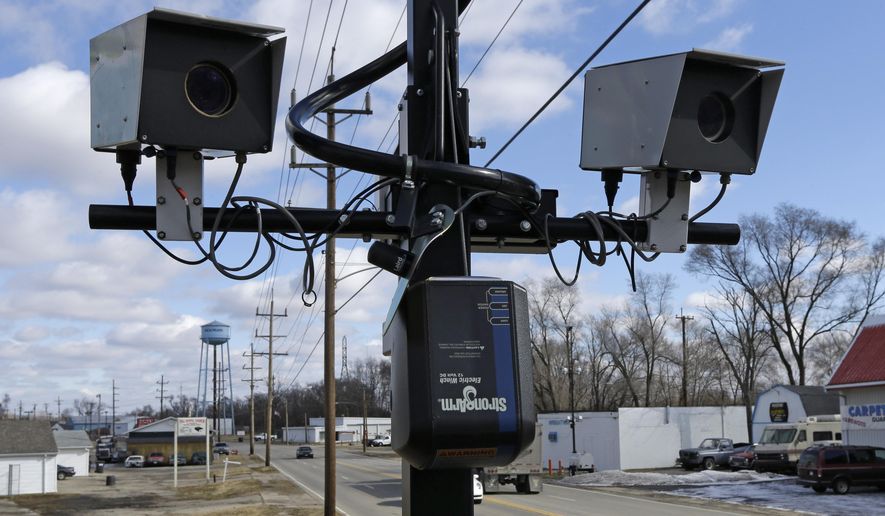OPINION:
Congress is considering in the last days of the lame-duck session the prohibition of red-light revenue cameras that scar the streets in Washington, and to urge the 50 states to do likewise. This overdue legislation to correct a wrong deserves a green light.
The Safer American Streets Act, sponsored by retiring Rep. Steve Stockman of Texas, a Republican, would ban any “automated traffic enforcement system” in the District of Columbia. The legislation then threatens to withhold 10 percent of certain pots of federal road money from states that employ speed and red-light cameras on federal roads.
There is good precedent for this approach. The federal government has used threats to reduce highway money under a funding formula to encourage the use of seat belts, to keep excessively heavy vehicles off interstate highways, to limit billboards on federal highways, to require zero tolerance of alcohol for underage drivers, to strip drug offenders of their driver’s licenses and to write national standards for commercial driver’s licenses.
Mr. Stockman proposes his legislation when many traffic camera programs are under review by the courts and government watchdog groups. These enforcement-by-camera schemes assume that ticketed motorists are guilty and require them, against all constitutional practice and tradition, to prove their innocence.
Last month, a judge in Florida ruled that private camera operators can’t issue traffic citations on a city’s behalf. This week, the Missouri Supreme Court accepted three traffic camera challenges and will hear pleas to strike down the cameras in towns and cities across the state.
A dozen states already prohibit the use of speed cameras. The Governors Highway Safety Association identifies nine other states that prohibit speed and red-light cameras. That number may soon grow to include Missouri, New Jersey and Ohio. Several cities, including Cleveland, Los Angeles and San Diego, have ordered the cameras off the streets.
In the District, officers of the municipal government defend their traffic ticket machines and struggle to keep a straight face to argue that the traffic cameras are intended to ensure safety, not to further soak the already well-soaked residents. A report by the D.C. inspector general’s office and a study by Howard University’s Transportation Safety Data Center give evidence that the cameras are indeed put onto the streets to collect revenue and do little to enhance safety or reduce traffic accidents.
The District’s cameras have collected more than a half-billion dollars, but cameras focused on reducing speed and eliminating the running of red lights hardly reduce danger. Running red lights and speeding are responsible for only 5 percent of D.C. traffic accidents.
The Howard University research reveals that the number of traffic-related injuries has not decreased since the cameras were introduced. In fact, the cameras have been blamed for an increase in accidents at certain intersections because drivers are hit from behind when they slam on their brakes at a sudden red light.
While the cameras have not made streets safer, they have collected millions of dollars. The District inspector general’s report makes it clear that the District’s network of speed and red-light cameras is intended to be a generator of revenue, not a scheme to eliminate accidents or make streets safer.
The report notes that the D.C. cameras are often inaccurate, never accountable and always unfair, echoing findings in other cities and states. If the 113th Congress wants to leave the District — and the nation — a parting gift before closing shop for good next Friday, it should adopt Mr. Stockman’s Safer American Streets proposal. The cameras have been a scourge for too long.




Please read our comment policy before commenting.